DIY Invisible Ink: Science Crafts for Kids
Are you ready to dive into the fascinating world of invisible ink? This DIY project is not just about writing secret messages; it’s about sparking your child's curiosity and creativity through science! Imagine the thrill of discovering how a simple household item can turn into a magical ink that reveals messages only under certain conditions. This article will guide you through fun and engaging methods to create and reveal hidden messages, making it a perfect activity for kids and parents alike.
Invisible ink refers to substances that are not visible to the naked eye but can be revealed through various methods. The science behind invisible ink is not only intriguing but also serves as a fantastic educational experience for children. By understanding how these inks work, kids can enhance their learning while having fun. Think of it as a secret agent mission where they are the detectives, uncovering hidden truths! This exploration into the world of invisible ink opens up discussions about chemistry, light, and even history, as this technique has been used for centuries.
Gathering the right materials is crucial for creating invisible ink. The best part? Many of the items you'll need can be found right in your kitchen! This makes it easy for kids to engage in hands-on science without requiring a trip to the store. Here’s a quick overview of some common household items that can serve as invisible ink:
- Lemon Juice: A safe and acidic option that reveals messages when heated.
- Baking Soda: A versatile ingredient that can create invisible ink, visible only when exposed to heat.
- Vinegar: Another acidic option that works similarly to lemon juice.
Many everyday items can serve as invisible ink, including lemon juice, vinegar, and baking soda. These materials are safe for kids and can be easily found in most kitchens. For instance, when you use lemon juice, the acidity works to create a message that is invisible until heat is applied. This is not just a fun activity; it’s a chance for kids to learn about chemical reactions and the properties of different substances.
Lemon juice is a popular choice for invisible ink due to its acidity. When heated, it reveals secret messages, providing a fun and safe way for kids to experiment with science. Just imagine your child’s excitement as they watch their hidden words appear before their eyes! This method is not only entertaining but also educational, as it teaches kids about the effects of heat on different materials.
Baking soda can also create invisible ink that becomes visible when exposed to heat. This method introduces children to chemical reactions while allowing them to create their own secret messages. Plus, it’s a great way to incorporate a little bit of chemistry into your craft time! Kids can mix baking soda with water to create their ink, which they can then use to write their secret notes.
For a more advanced experience, specialty inks like UV-reactive inks can be used. These inks require a UV light to reveal messages, adding an element of mystery and excitement to the craft. Using UV light not only makes the experience more thrilling but also teaches children about the fascinating properties of light and how it interacts with different materials.
Creating invisible ink is a simple process that involves mixing a chosen substance with water. This section provides step-by-step instructions for kids to craft their own invisible ink. The mixing process is straightforward, allowing kids to experiment with different ratios of ink to water. This hands-on activity encourages creativity and scientific exploration while keeping the excitement alive!
The mixing process is easy and can be done with just a few steps:
- Choose your ink substance (lemon juice, baking soda, etc.).
- Mix it with water in a small bowl. A good ratio to start with is 1 part ink to 2 parts water.
- Stir the mixture until it’s well combined.
Now, your invisible ink is ready for action!
Kids can use various techniques to write with invisible ink, such as using cotton swabs or paintbrushes. This section discusses different methods to enhance their writing experience. Using a cotton swab can create fine lines, while a paintbrush allows for broader strokes. Encourage your kids to get creative with their writing styles!
Revealing invisible ink messages is part of the fun! This section covers different techniques to uncover hidden writing, encouraging kids to engage in scientific observation. The thrill of discovery is what makes this craft so exciting.
Using heat to reveal messages is a classic technique. This method teaches children about the effects of temperature on substances and how heat can change the visibility of their ink. Whether it’s a light bulb or a warm iron (with supervision), kids will be amazed to see their messages come to life!
For those using UV-reactive inks, a UV light is essential for revealing messages. This modern approach introduces kids to technology and the fascinating properties of light. Watching their secret messages glow under the UV light adds an extra layer of excitement to the experience!
While creating invisible ink is fun, safety should always come first. This section provides essential safety tips to ensure a safe crafting experience for children. It's vital to keep safety in mind to make the crafting experience enjoyable and worry-free.
When using heat to reveal messages, it's important to supervise children closely. This ensures they understand the potential dangers and learn safe practices in the kitchen or workshop. Always remind them to be cautious around hot surfaces!
Choosing non-toxic materials is crucial for kids' safety. This section emphasizes the importance of using safe substances to prevent any health risks during the craft activities. Always opt for ingredients that are safe and suitable for children, ensuring a worry-free crafting experience.
Q: Is invisible ink safe for kids?
A: Yes, as long as non-toxic materials are used and children are supervised, invisible ink crafts can be very safe and educational.
Q: Can I use any type of paper for invisible ink?
A: Most paper types work well, but thicker paper may hold up better when using heat to reveal messages.
Q: What if I don’t have a UV light?
A: You can use heat methods to reveal messages instead, which are just as fun!

What is Invisible Ink?
Invisible ink refers to substances that are not visible to the naked eye but can be revealed through various methods. It’s like a hidden treasure waiting to be discovered! When you write with invisible ink, your secret message is concealed until you use a special technique to unveil it. This captivating concept not only intrigues children but also sparks their curiosity about science and chemistry. By exploring invisible ink, kids can learn about chemical reactions, heat application, and the fascinating properties of different materials. Imagine the thrill of writing a note to your friend that only they can see!
Invisible ink has been used throughout history for covert communications, particularly during wars and espionage. Today, it serves as a fun and educational tool for children, encouraging them to engage in hands-on learning experiences. The science behind invisible ink is rooted in the interaction of chemicals and how they react to heat or light. To put it simply, invisible ink is a way to turn ordinary materials into extraordinary tools for creativity and exploration.
There are various types of invisible ink, and each type can be revealed using different methods. Here’s a quick overview of some common types:
- Heat-sensitive inks: These inks become visible when exposed to heat, such as from an iron or a candle flame.
- UV-reactive inks: These are special inks that can only be seen under ultraviolet light, adding an element of mystery to the writing.
- PH-sensitive inks: Some inks change color when they come into contact with acids or bases, making them a fun way to explore chemistry.
Understanding the science of invisible ink not only enhances children's learning experiences but also promotes critical thinking and problem-solving skills. As they experiment with different methods of creating and revealing their secret messages, they are actively engaging with the scientific process. So, let’s dive deeper into the world of invisible ink and discover how to create and use it!

Materials Needed for Invisible Ink
Gathering the right materials is crucial for creating invisible ink, and the best part is that many of these items can be found right in your kitchen! This makes it not only exciting but also accessible for kids and parents alike. The thrill of crafting secret messages can spark a child's imagination and curiosity about science. So, what do you need? Let’s dive into some common household items that can serve as invisible ink.
First and foremost, lemon juice is a fantastic choice for invisible ink. Its natural acidity allows it to become visible when heated, making it a safe and fun option for kids. Just imagine your child’s excitement as they reveal their secret messages with a bit of heat! Another great item is baking soda, which can also create invisible ink that reveals itself under heat. This not only introduces children to the wonders of chemical reactions but also makes them feel like real scientists experimenting in their own labs.
In addition to these household staples, vinegar can also be utilized as invisible ink. Just like lemon juice, it becomes visible when subjected to heat. The beauty of these materials lies in their simplicity and availability, allowing for spontaneous crafting sessions that can lead to hours of fun and learning.
For those looking to take their invisible ink experiments to the next level, specialty inks such as UV-reactive inks can be used. These inks require a UV light to reveal messages, adding an element of mystery and excitement to the craft. Kids will be thrilled to learn that they can create messages that only appear under a special light, making their secret communications even more intriguing!
Here’s a quick overview of the materials you can gather:
| Material | Visibility Method | Notes |
|---|---|---|
| Lemon Juice | Heat | Acidic; safe for kids |
| Baking Soda | Heat | Introduces chemical reactions |
| Vinegar | Heat | Common kitchen item |
| UV-reactive Ink | UV Light | Advanced experience |
In conclusion, the materials needed for invisible ink are not only easy to find but also provide a wonderful opportunity for children to engage in hands-on science activities. By using everyday items, kids can explore the fascinating world of chemistry, all while having a blast creating and revealing their own secret messages!
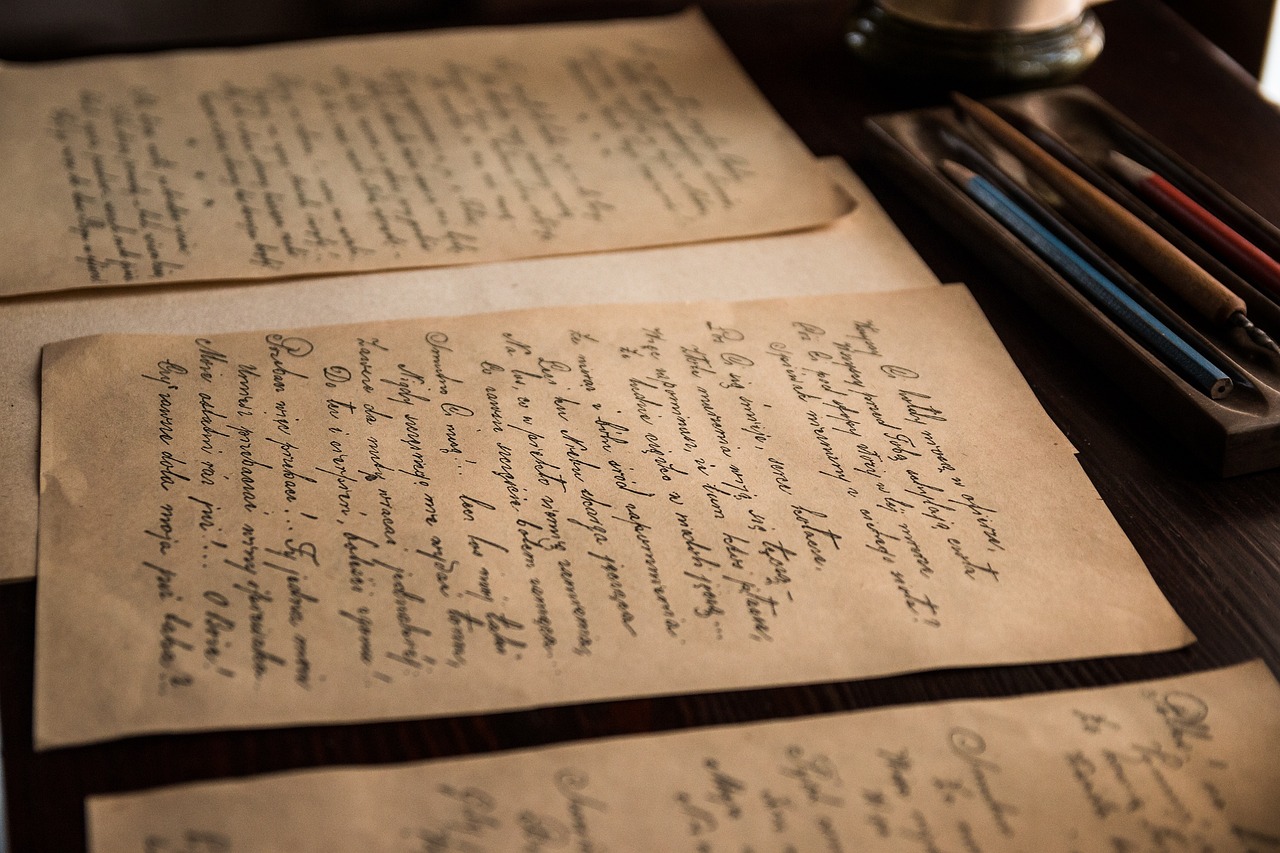
Common Household Items
When it comes to creating invisible ink, you might be surprised to discover that many common household items can serve as your secret writing tools. These materials are not only easily accessible but also safe for kids, making them perfect for fun and educational science crafts. Imagine rummaging through your kitchen and finding treasures that can turn your ordinary writing into a magical experience!
One of the most popular choices for invisible ink is lemon juice. This acidic juice, which is often used in cooking and drinks, can create messages that remain hidden until exposed to heat. When heated, the organic compounds in lemon juice oxidize, turning brown and revealing your secret notes. It’s like your very own spy craft right at home!
Another fantastic option is baking soda. This versatile ingredient is not just for baking delicious treats; it can also be mixed with water to create an invisible ink that reveals itself when heated. The baking soda reacts to heat, producing a brown color that uncovers your hidden messages. This method introduces children to the fascinating world of chemical reactions, allowing them to see firsthand how everyday items can be transformed into something extraordinary.
Additionally, you might consider using vinegar. Much like lemon juice, vinegar can be used to write secret messages that appear when heated. It’s readily available in most kitchens and adds another layer of excitement to your invisible ink adventures.
Lastly, if you want to take it a step further, specialty inks like UV-reactive inks can be used. These inks are a bit more advanced and require a UV light to reveal the messages. The thrill of using a special light to uncover hidden writing adds an element of mystery and excitement that kids will love!
In conclusion, the world of invisible ink is just a few steps away, and you don’t need to look far to find the materials you need. With items as simple as lemon juice, baking soda, vinegar, and even specialty inks, you can ignite your child’s curiosity and creativity. So, gather these common household items and prepare for a fun-filled journey into the science of secret writing!
- Is invisible ink safe for kids? Yes, when using common household items like lemon juice and baking soda, the materials are generally safe. Always supervise children during the crafting process.
- Can I use any type of paper for writing? It’s best to use plain white paper for optimal visibility when revealing your messages.
- How do I reveal the messages written with invisible ink? You can reveal messages by applying heat or using a UV light, depending on the type of invisible ink used.
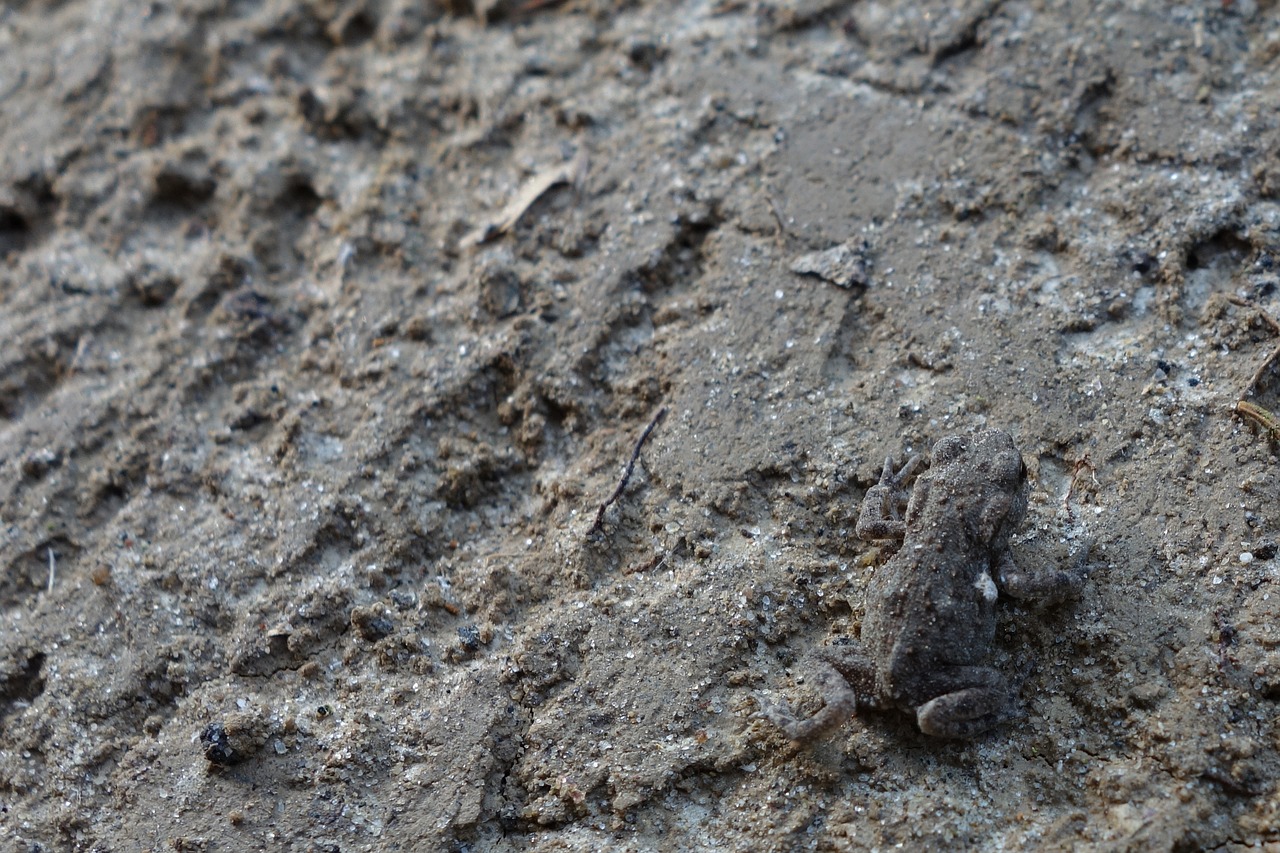
Using Lemon Juice
Lemon juice is not just a tangy addition to your favorite dishes or a refreshing drink; it also serves as an excellent medium for creating invisible ink! This natural substance, with its acidic properties, can be transformed into a secret writing tool that captivates children's imaginations. When you apply lemon juice to a piece of paper, it remains invisible until you heat the paper, which reveals the hidden message in a delightful and surprising way. It's like magic, but grounded in science!
To get started with lemon juice as invisible ink, you’ll need a few simple materials. First, gather some fresh lemons, a small bowl, a cotton swab or paintbrush, and a piece of white paper. Squeeze the juice from the lemons into the bowl, and then dip your writing tool into the juice. Kids can write their secret messages, doodles, or even draw little pictures that will remain hidden until revealed. This process not only makes writing fun but also introduces children to the fascinating world of chemistry and reactions.
Once the message is written, it's time for the thrilling reveal! The secret lies in the application of heat. You can use a hairdryer, an iron (with adult supervision), or even hold the paper near a light bulb. As the paper heats up, the lemon juice oxidizes and turns brown, exposing the previously hidden text. This transformation is a perfect opportunity to discuss scientific concepts such as oxidation and the effects of heat on different substances. Kids will be amazed to see their secret messages come to life, and it fosters a sense of wonder about the science behind everyday materials.
Here’s a quick recap of the steps involved in using lemon juice as invisible ink:
- Gather your materials: lemons, a bowl, a writing tool, and paper.
- Write your message: Use the lemon juice to write with a cotton swab or paintbrush.
- Reveal your message: Apply heat to the paper to make the message visible.
Using lemon juice for invisible ink is not only a fun craft but also an educational experience that combines art and science. It encourages kids to think creatively while learning about chemical reactions in a safe and engaging way. So the next time you're looking for a fun activity that blends creativity with learning, grab some lemons and start writing those secret messages!
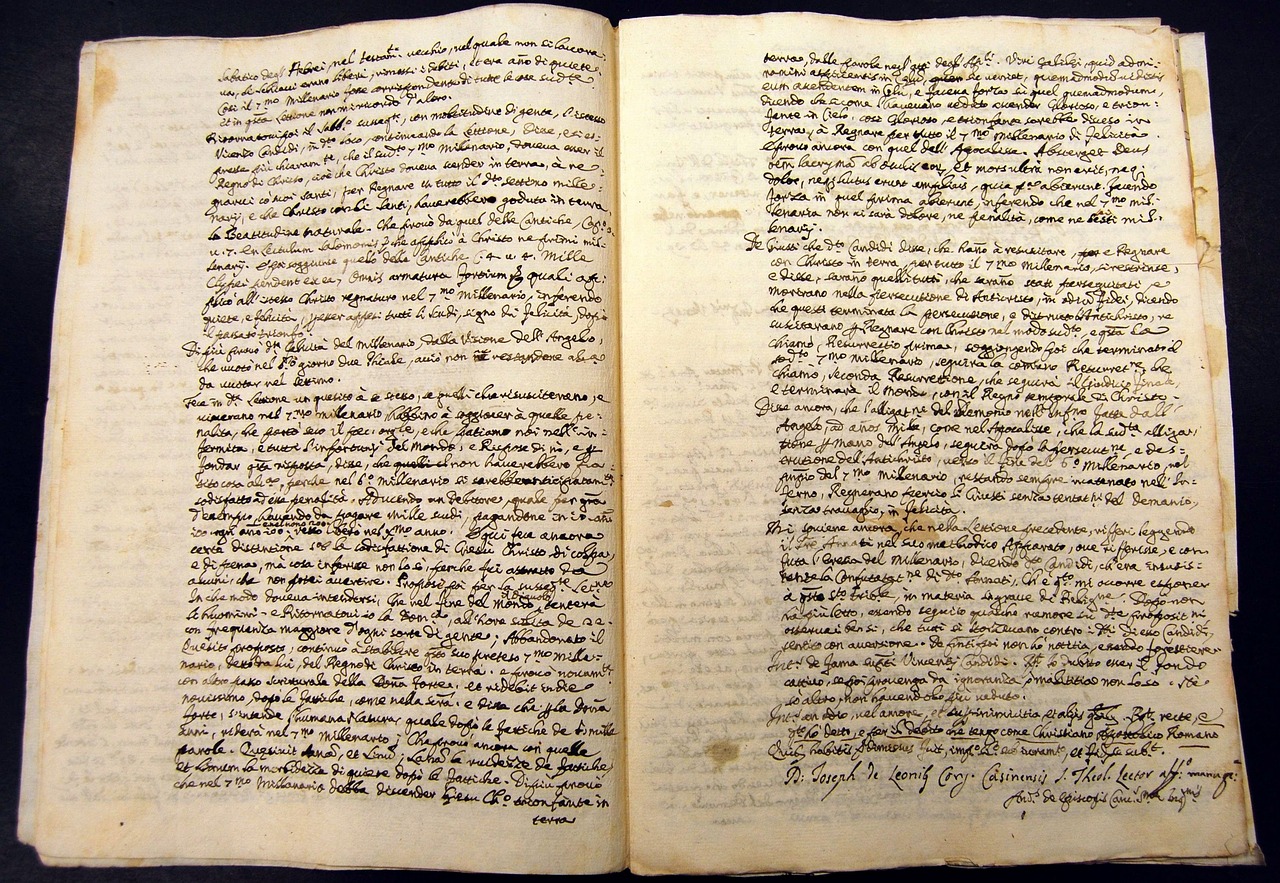
Using Baking Soda
Baking soda isn't just for baking; it's a fantastic secret weapon in the world of invisible ink! This common household item serves as a perfect medium for kids to explore the wonders of chemistry while having a blast creating their own secret messages. When mixed with water, baking soda forms a solution that can be used to write hidden notes. What’s truly magical is that these messages remain invisible until they are heated, revealing the creativity and ingenuity of young scientists.
To get started with baking soda as invisible ink, you'll need to follow a few simple steps. First, gather your materials: baking soda, water, a small bowl for mixing, and some paper. Once you have everything ready, mix equal parts of baking soda and water in the bowl. This creates a paste-like consistency that is perfect for writing. Kids can use cotton swabs, paintbrushes, or even toothpicks to write their secret messages. The beauty of this method is that it encourages children to express themselves creatively while learning about the properties of acids and bases.
After writing your message, let it dry completely. This part is crucial because the ink must be invisible before revealing it. Once it’s dry, the real fun begins! To unveil the hidden message, you can use a heat source like a lamp or an iron (with adult supervision, of course). As the paper heats up, the baking soda will darken, revealing the secret text. It's like watching a magic trick unfold right before your eyes!
Here’s a quick recap of the process:
- Mix equal parts of baking soda and water in a bowl.
- Use a writing tool to create your message on paper.
- Allow the message to dry completely.
- Reveal your message by applying heat.
This method not only teaches kids about chemical reactions but also gives them a sense of accomplishment when they see their messages come to life. Plus, it's a great way to spark conversations about science and creativity. So, why not gather the kids and start your own invisible ink adventure with baking soda? You never know what secrets they might write!
Q: Is baking soda safe for kids to use?
A: Yes! Baking soda is non-toxic and safe for children to handle, making it an excellent choice for fun science experiments.
Q: Can I use other types of paper for this project?
A: While regular printer paper works well, you can experiment with different types of paper, such as construction paper or cardstock, to see how they react to heat.
Q: What should I do if I don't have a heat source?
A: If you don't have an iron or lamp, you can try using a hairdryer on a low setting to reveal your messages. Just be sure to keep it at a safe distance!
Q: How long do the messages stay visible?
A: Once revealed, the messages will remain visible until the paper is cooled down. However, repeated heating may cause the ink to fade over time.

Specialty Inks
Explore the fascinating world of invisible ink with engaging science crafts that are perfect for children. This article provides fun methods and tips to create and reveal secret messages using simple materials.
Invisible ink refers to substances that are not visible to the naked eye but can be revealed through various methods. Understanding its science sparks curiosity and enhances children's learning experiences.
Gathering the right materials is crucial for creating invisible ink. Common household items can be transformed into exciting tools for secret writing, making it accessible for kids and parents alike.
Many everyday items can serve as invisible ink, including lemon juice, vinegar, and baking soda. These materials are safe for kids and can be easily found in most kitchens.
Lemon juice is a popular choice for invisible ink due to its acidity. When heated, it reveals secret messages, providing a fun and safe way for kids to experiment with science.
Baking soda can also create invisible ink that becomes visible when exposed to heat. This method introduces children to chemical reactions while allowing them to create their own secret messages.
For those looking to elevate their invisible ink experience, specialty inks offer an exciting twist! These inks, such as UV-reactive inks, can only be seen under specific conditions, adding an element of mystery to the craft. Imagine writing a secret note that only your best friend can read with a special light! This not only makes the activity more thrilling but also introduces kids to the fascinating properties of light and chemistry.
When using specialty inks, it’s essential to understand how they work:
- UV-Reactive Inks: These inks are invisible until exposed to ultraviolet light. They glow brightly under UV light, making your secret messages pop out in a way that feels like magic!
- Thermochromic Inks: These inks change color with temperature. You can write a message that appears when warmed up, like rubbing it with your hands or holding it close to a light bulb!
Using these inks can lead to a series of experiments where kids can test their creativity and scientific knowledge. For instance, they can create secret codes, design treasure maps, or even write birthday cards that reveal messages only when the recipient shines a UV light on them. The possibilities are endless!
Creating invisible ink is a simple process that involves mixing a chosen substance with water. This section provides step-by-step instructions for kids to craft their own invisible ink.
The mixing process is straightforward, allowing kids to experiment with different ratios of ink to water. This hands-on activity encourages creativity and scientific exploration.
Kids can use various techniques to write with invisible ink, such as using cotton swabs or paintbrushes. This section discusses different methods to enhance their writing experience.
Revealing invisible ink messages is part of the fun! This section covers different techniques to uncover hidden writing, encouraging kids to engage in scientific observation.
Using heat to reveal messages is a classic technique. This method teaches children about the effects of temperature on substances and how heat can change the visibility of their ink.
For those using UV-reactive inks, a UV light is essential for revealing messages. This modern approach introduces kids to technology and the fascinating properties of light.
While creating invisible ink is fun, safety should always come first. This section provides essential safety tips to ensure a safe crafting experience for children.
When using heat to reveal messages, it's important to supervise children closely. This ensures they understand the potential dangers and learn safe practices in the kitchen or workshop.
Choosing non-toxic materials is crucial for kids' safety. This section emphasizes the importance of using safe substances to prevent any health risks during the craft activities.
Q: Can I use any type of paper for invisible ink?
A: Yes! Most types of paper work well, but thicker paper may yield better results when revealing messages.
Q: Is invisible ink safe for kids?
A: Absolutely! As long as you use non-toxic materials and supervise when using heat, invisible ink crafts are safe and fun.
Q: How long do the messages last?
A: The longevity of the messages depends on the materials used and storage conditions. Generally, they can last for a while if kept in a cool, dry place.

How to Create Invisible Ink
Creating invisible ink is not just a fun project; it’s a fantastic way for kids to dive into the world of science while unleashing their creativity. The process is surprisingly simple and involves just a few steps that can lead to hours of entertainment. To start, you’ll need to choose your preferred invisible ink material, which could be something as common as lemon juice or baking soda. Each of these materials has unique properties that make them perfect for secret writing adventures!
Once you’ve selected your ink, the next step is to mix it with water. This is where the magic begins! Here’s a basic guideline for mixing:
| Material | Ratio of Ink to Water | Notes |
|---|---|---|
| Lemon Juice | 1:1 | Use fresh lemon juice for best results. |
| Baking Soda | 1:2 | Mix well to ensure even consistency. |
Mixing is straightforward! Just combine your chosen ink with water in a small bowl or container. The goal is to create a liquid that can easily be applied to paper without soaking through. Kids can experiment with different ratios to see how it affects the visibility of their messages when revealed. Isn’t it exciting to think they can control how their secret notes turn out?
Now, let’s talk about writing techniques. Kids can use various tools to apply their invisible ink. A cotton swab or a fine paintbrush works wonderfully for this purpose. Encourage them to get creative with their writing styles! They can write simple messages, draw secret symbols, or even create intricate designs. The key is to make sure the ink is applied evenly and not too thick, as this could affect how well the message is revealed later.
Once the writing is done, it’s essential to let the paper dry completely. This step is crucial because it allows the ink to become truly invisible. After drying, the fun really begins when they reveal their hidden messages using heat or UV light. This hands-on activity is not only entertaining but also educational, as it introduces children to basic scientific concepts like chemical reactions and the effects of heat on different materials.
In summary, creating invisible ink is a delightful blend of science and art. It encourages kids to explore, experiment, and engage with their environment in a playful way. So gather those materials, unleash your inner scientist, and get ready for some secret writing fun!
1. Can I use any type of paper for invisible ink?
Yes, you can use regular paper, but thicker paper tends to work better as it holds up to heat better. Experiment with different types to see which one works best!
2. Is invisible ink safe for kids?
Absolutely! The materials used, like lemon juice and baking soda, are safe and non-toxic. Just make sure to supervise kids when using heat sources.
3. How do I reveal the messages written with invisible ink?
You can reveal the messages by applying heat (like holding it near a light bulb) or using a UV light for specialty inks. Each method offers a unique way to uncover the secrets!
4. Can I store leftover invisible ink?
Yes! You can store unused invisible ink in a sealed container for future use. Just remember to label it clearly so no one accidentally uses it for something else!

Mixing Instructions
Creating your own invisible ink is not only fun but also a fantastic way to engage kids in the world of science! The process is incredibly simple and can be done with just a few easy steps. First, you’ll need to choose your invisible ink base, such as lemon juice or baking soda. Each of these substances has unique properties that make them ideal for secret writing.
To start, gather your materials. For example, if you're using lemon juice, you only need:
- Lemon juice
- Water
- A small bowl
- A cotton swab or paintbrush
Now, let’s dive into the mixing process! Take a small bowl and combine equal parts of lemon juice and water. This dilution not only makes it easier to write with but also enhances the effectiveness of the ink when it’s time to reveal your secret message. For instance, you can mix:
| Ingredient | Amount |
|---|---|
| Lemon Juice | 1 tablespoon |
| Water | 1 tablespoon |
Once you have your mixture ready, stir it gently until well combined. If you opt for baking soda, the process is similar. Mix one part baking soda with one part water in a bowl. This mixture can also be adjusted by adding more water if you find it too thick for writing.
After your ink is mixed, it's time to write! Dip your cotton swab or paintbrush into the mixture and start crafting your secret message on a piece of paper. The beauty of invisible ink is that it dries clear, leaving no trace of your message until you decide to reveal it. Encourage your kids to be creative with their messages—perhaps they can write a secret note to a friend or create a treasure map!
Mixing invisible ink at home is a fantastic way to blend creativity with scientific exploration. Not only do kids get to play with writing, but they also learn about the chemical properties of the materials they are using. So, gather those household items, mix them up, and let the secret writing adventure begin!
Q: Can I use other liquids for invisible ink?
A: Yes! Other household items like vinegar or milk can also work as invisible inks, but lemon juice and baking soda are the most popular due to their effectiveness and safety.
Q: How long does the ink last?
A: Invisible ink can last indefinitely if stored properly. Just make sure to keep the mixture in a sealed container away from direct sunlight and heat.
Q: Is it safe for young children?
A: Absolutely! As long as you supervise them during the process, using non-toxic materials like lemon juice and baking soda is completely safe for kids.

Writing Techniques
When it comes to crafting secret messages with invisible ink, the you choose can enhance the fun and creativity of the experience. Kids can explore various methods to apply their invisible ink, making the process not only educational but also a thrilling adventure! One of the simplest ways is to use a cotton swab. This household item is perfect for precision and allows for neat writing. Children can dip the cotton swab into their invisible ink solution and write their secret messages on plain paper. The beauty of using a swab is that it gives them control over their strokes, enabling them to create intricate designs or simply jot down a paragraph of secret text.
Another exciting technique involves using a paintbrush. This method allows for broader strokes and even artistic flair! Kids can let their imaginations run wild, painting pictures or writing messages in a more expressive way. This technique also introduces them to the concept of brush techniques where they can experiment with different brush sizes to see how it affects the visibility of their writing once revealed. For instance, a thicker brush may leave a more pronounced line, while a finer brush can create delicate details.
If you want to take it a step further, consider using a quill or fountain pen for a classic touch. Kids can learn about the history of writing instruments while having fun creating their own secret messages. This method not only adds an element of sophistication but also teaches them about the different types of ink flow and how it can affect their writing style.
For those who enjoy a bit of technology, using a digital tablet with a stylus can also be a unique way to create invisible ink messages. Kids can write their messages digitally and then print them out on special paper that reacts to the invisible ink. This merges traditional crafting with modern technology, making it a fascinating project for tech-savvy youngsters.
To make the writing experience even more engaging, encourage kids to experiment with different surfaces. Writing on various types of paper, cardboard, or even fabric can yield different results when it comes to revealing their messages. For example, some surfaces may absorb the ink differently, affecting how well the message is revealed when heat or UV light is applied. This experimentation not only makes the project more interesting but also teaches kids about the properties of different materials and how they interact with substances.
In summary, the way kids choose to write with invisible ink can greatly influence their experience. Whether they opt for simple tools like cotton swabs and paintbrushes or explore more advanced methods with digital technology, the possibilities are endless. The key is to encourage creativity and exploration, allowing them to discover the joy of secret writing while learning about the science behind it.
- What materials can be used for invisible ink? Common materials include lemon juice, vinegar, and baking soda, all of which are safe and easily found at home.
- How can I reveal the hidden messages? You can use heat from a light bulb or a UV light for specialty inks to reveal the messages.
- Is it safe for kids to use heat sources? Yes, but adult supervision is essential to ensure safety when using heat to reveal messages.
- Can I use any type of paper for writing? Yes, but different types of paper may react differently to the invisible ink, so experimenting can be fun!
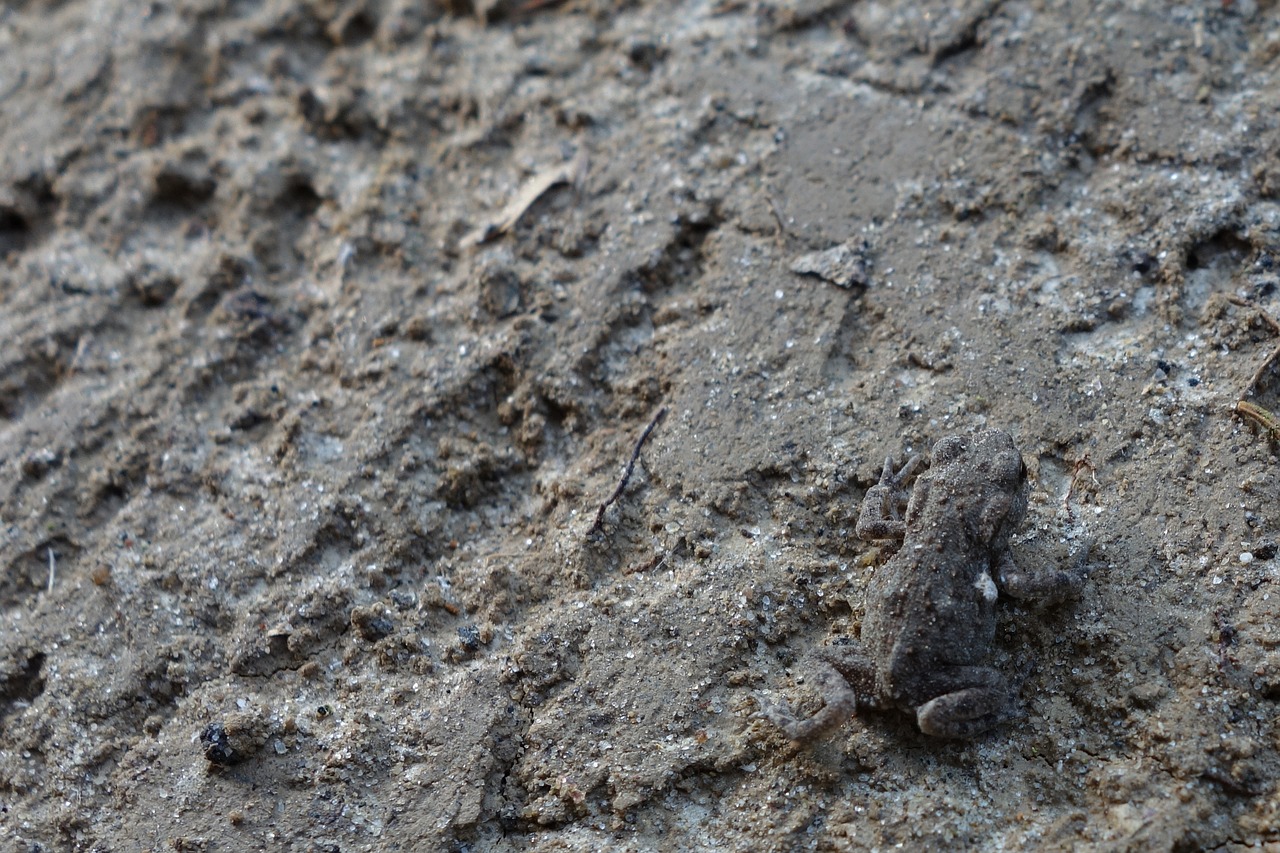
Revealing the Secret Messages
There's something undeniably thrilling about uncovering hidden messages, isn't there? It's like stepping into a world of mystery and adventure! When kids create their own secret writings, the process of revealing those messages can be just as exciting as writing them. In this section, we’ll delve into some fun and engaging techniques to uncover the invisible ink, turning the reveal into a mini science experiment.
One of the most classic methods for revealing invisible ink is the heat method. This technique is not only simple but also teaches children about the effects of temperature on different substances. When you apply heat to the paper, the invisible ink—like lemon juice or baking soda—reacts and reveals the hidden message. It’s akin to magic! Just imagine the excitement on a child’s face as they see their secret message appear before their eyes. However, it’s essential to supervise this process closely. A simple household item like a hairdryer or an iron on a low setting can work wonders. Just remember to place a piece of cardboard under the paper to protect the surface underneath!
For those who are feeling a bit more adventurous, using UV light to reveal messages can add a modern twist to the classic invisible ink experience. If you've opted for UV-reactive inks, all you need is a UV flashlight. When the light shines on the paper, the invisible ink glows, revealing the hidden words. This method not only brings a sense of wonder but also introduces kids to the fascinating properties of light. It’s like being a detective in a high-tech spy movie!
To make the experience even more engaging, consider creating a mini-experiment where kids can compare the effectiveness of both methods. They could write the same message using different types of invisible ink and then reveal them using heat and UV light. This not only fosters creativity but also encourages scientific observation and critical thinking. After all, science is all about asking questions and seeking answers!
Here’s a quick comparison of the two methods:
| Method | Materials Needed | How It Works |
|---|---|---|
| Heat Method | Paper, invisible ink (e.g., lemon juice), heat source (hairdryer or iron) | Heat causes the ink to oxidize, revealing the message. |
| UV Light Method | Paper, UV-reactive ink, UV flashlight | UV light makes the ink fluoresce, revealing the message. |
Remember, the goal is to spark curiosity and excitement in children. The reveal process should be a fun adventure, filled with surprises and learning opportunities. So gather those materials, put on your detective hats, and let the secret message unveiling begin!
- Is invisible ink safe for kids? Yes, as long as you use non-toxic materials like lemon juice or baking soda, and supervise heat usage.
- Can I use any type of paper for invisible ink? Regular paper works best, but avoid glossy or coated papers as they may not absorb the ink properly.
- What if I don't have UV ink? No worries! Lemon juice and baking soda are excellent alternatives that can be revealed with heat.
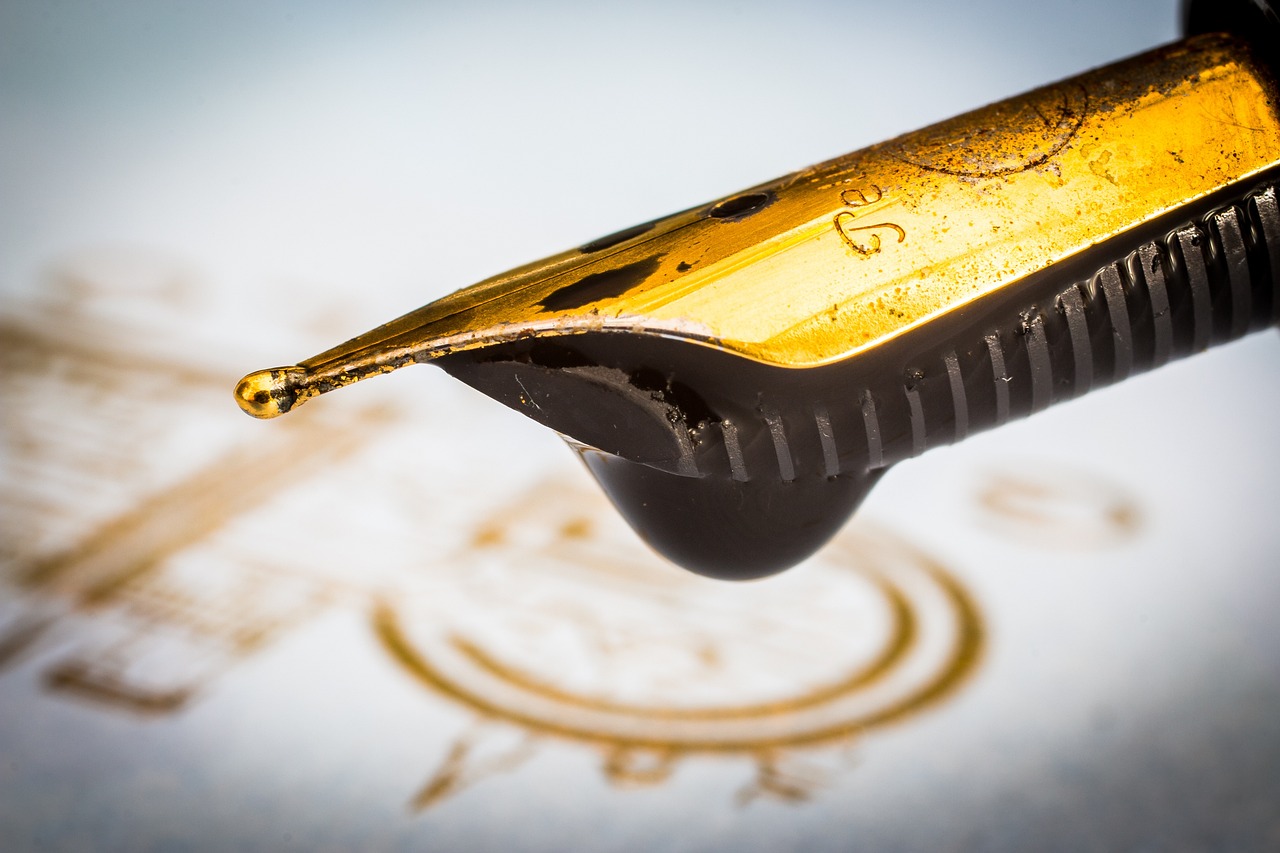
Heat Method
One of the most thrilling ways to reveal your hidden messages written in invisible ink is through the . This technique is not only simple but also provides an exciting way for kids to learn about how temperature affects different substances. When you apply heat to the paper where your secret message is written, the invisible ink reacts in such a way that it becomes visible. Isn’t that magical? Imagine the surprise on your friends’ faces when you unveil your hidden notes!
To get started with the heat method, you’ll need a few essential items:
- A piece of paper with your invisible ink message
- A heat source (like a light bulb, iron, or even a candle—under supervision!)
- Adult supervision to ensure safety
Here’s a step-by-step guide on how to reveal your messages:
- Prepare Your Message: First, write your secret message using the invisible ink you created, such as lemon juice or baking soda mixed with water.
- Choose Your Heat Source: Select a safe heat source. If you're using an iron, make sure it's set to a low heat to avoid burning the paper.
- Reveal the Message: Hold the paper near the heat source, but be careful not to let the paper touch it directly. You’ll start to see your message appear as the paper heats up.
- Watch the Magic Happen: As the ink reacts to the heat, your message will slowly become visible. It’s like watching a secret come to life!
It's important to note that the heat method works best with certain types of invisible ink. For instance, lemon juice will turn brown when heated, while baking soda will reveal a different color depending on the heat applied. This adds a layer of excitement as kids can experiment with different substances and see how they react differently to heat. Just like a science experiment, this method encourages curiosity and exploration, making it a fantastic educational activity!
Additionally, remind kids to maintain a safe distance from the heat source and to always have an adult nearby. Safety is crucial while experimenting with heat, and it’s a great opportunity for children to learn about safe practices in the kitchen or workshop.
Q: Can I use any type of paper for this experiment?
A: Yes, you can use regular printer paper or even thicker paper, but be cautious with very thin paper as it may burn quickly.
Q: What if I don’t have a heat source at home?
A: You can also use sunlight! Place your paper outside on a warm day, and the heat from the sun can sometimes reveal your message, though it may take longer.
Q: Is it safe to use a candle for this method?
A: While using a candle can be effective, it is essential to supervise children closely to prevent any accidents. Always keep a safe distance and have water or a fire extinguisher nearby just in case.
Q: Can I use other substances besides lemon juice and baking soda?
A: Absolutely! Other substances like milk or vinegar can also work as invisible ink. The key is to experiment and see what works best for you!

UV Light Method
The is an exciting way to reveal secret messages created with invisible ink. This technique not only adds an element of mystery but also introduces children to the fascinating properties of ultraviolet light. When using UV-reactive inks, the messages remain completely hidden until exposed to a UV light source, making it feel like a scene straight out of a spy movie!
To get started with this method, you'll need a few simple items:
- UV-reactive ink (which can be purchased online or at craft stores)
- UV flashlight or a UV lamp
- Paper or any other surface suitable for writing
First, have your child write their secret message using the UV-reactive ink. The fun part is that they won't be able to see what they've written until they shine the UV light on the paper. This adds an air of suspense and excitement, as they eagerly await the revelation of their hidden words.
When the UV light is turned on and directed at the paper, the hidden message will glow brightly, contrasting against the background. This reaction occurs because the ink contains special compounds that fluoresce under UV light. It's a fantastic way to teach kids about light properties and fluorescence in a hands-on manner.
Here’s a quick overview of the steps involved in the UV Light Method:
| Step | Action |
|---|---|
| 1 | Gather your materials: UV-reactive ink, UV light, and paper. |
| 2 | Write a secret message using the UV-reactive ink. |
| 3 | Turn on the UV light and shine it over the paper. |
| 4 | Watch as the hidden message glows and is revealed! |
Using the UV Light Method is not only thrilling but also an educational experience. Kids can learn about the science behind light and how different materials react under various conditions. Plus, it sparks their creativity and encourages them to think outside the box. So, gather your supplies, turn off the lights, and get ready for some glowing fun!
Q: Is UV light safe for children?
A: Yes, UV lights are generally safe when used appropriately. It’s important to supervise children while using UV lights to ensure they do not look directly at the light source.
Q: Can I use regular ink instead of UV-reactive ink?
A: Regular ink will not work with the UV Light Method. You need specific UV-reactive ink for the messages to be revealed under UV light.
Q: Where can I find UV-reactive ink?
A: UV-reactive ink can often be found at craft stores, online marketplaces, or specialty art supply stores.
Q: How bright will the message be under UV light?
A: The brightness of the message can vary based on the type of UV-reactive ink used and the strength of the UV light. Generally, the messages will be quite visible and exciting to see!
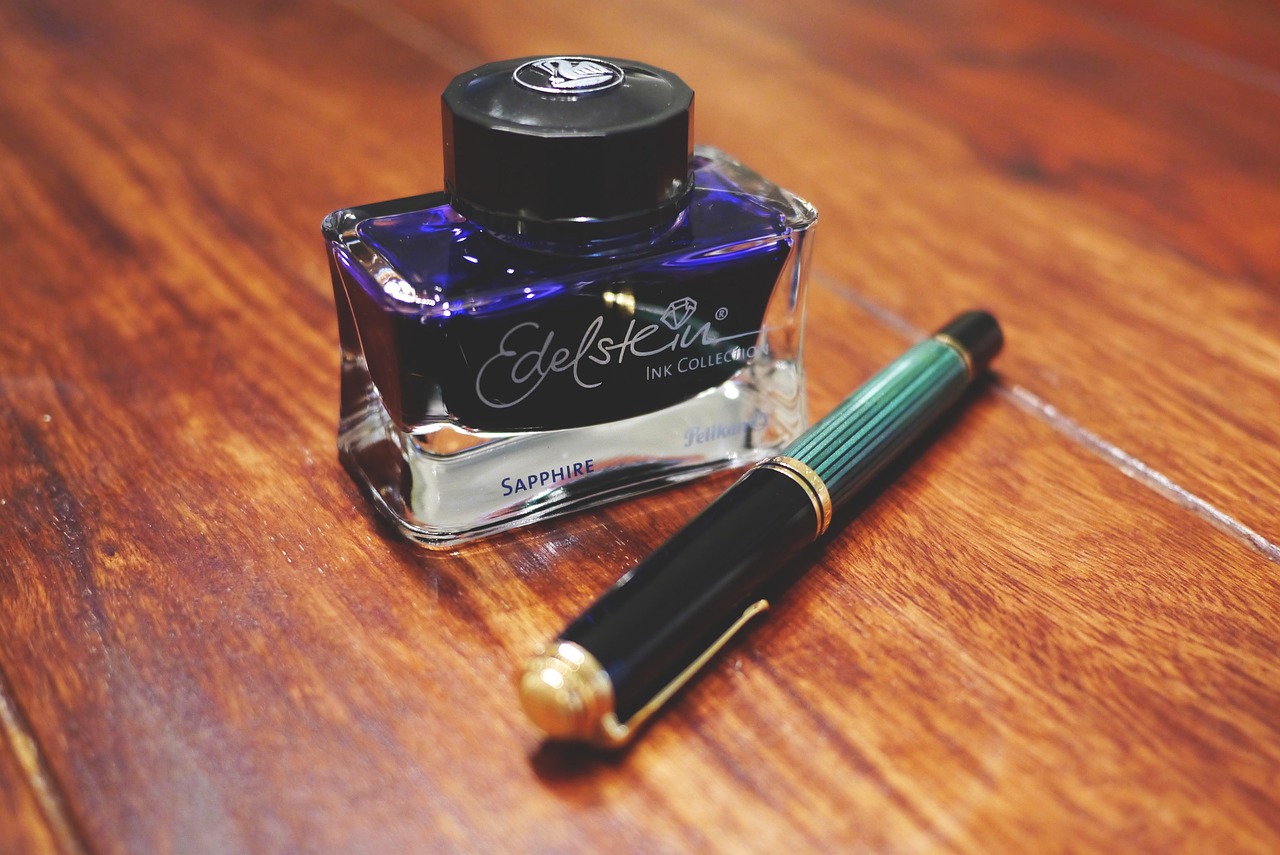
Safety Tips for Kids
When diving into the exciting world of DIY invisible ink, safety should always be at the forefront of your mind. Engaging in science crafts can be thrilling, but it’s essential to ensure that kids are protected while they explore their creativity. Here are some crucial safety tips to keep in mind:
First and foremost, when using heat sources to reveal your secret messages, supervision is key. Children should never be left unattended while working with anything hot. This not only helps them understand the potential dangers but also teaches them safe practices in the kitchen or workshop. You might want to set up a designated “crafting zone” where you can keep an eye on the little ones while they experiment with their invisible ink.
Another important consideration is the materials used in your invisible ink projects. Always opt for non-toxic substances. Many common household items like lemon juice and vinegar are safe, but it’s essential to check labels and ensure that everything is child-friendly. Here’s a quick rundown of some common materials and their safety ratings:
| Material | Safety Rating |
|---|---|
| Lemon Juice | Safe |
| Vinegar | Safe |
| Baking Soda | Safe |
| UV-Reactive Ink | Check Label |
Moreover, it’s vital to educate children about the importance of cleanliness while crafting. Encourage them to wash their hands before and after handling any materials, especially when working with substances that may not be intended for ingestion. This simple habit can prevent any unwanted accidents and instills a sense of responsibility in young crafters.
Lastly, always remind kids to wear protective gear if necessary. While most of the materials are safe, using safety goggles can be a fun addition, especially if they’re working with any substances that might splash. Making safety a part of the crafting experience not only keeps them safe but also makes them feel like real scientists!
By following these safety tips, kids can enjoy the thrill of creating invisible ink while ensuring their well-being. Remember, the goal is to have fun and learn, all while staying safe!
Here are some common questions parents might have regarding invisible ink and safety:
- Is invisible ink safe for children? Yes, as long as you use non-toxic materials and supervise them during the process.
- What should I do if my child accidentally ingests a material? Contact a medical professional immediately and have the material's label on hand for reference.
- Can we use other materials for invisible ink? Absolutely! Just make sure to check their safety ratings and supervise kids during use.
- How can I make the crafting experience more educational? Discuss the science behind each material and the reactions that occur when revealing the ink.

Handling Heat Sources
When it comes to revealing your secret messages using heat, safety is paramount! Kids are naturally curious and often eager to explore, but it’s essential to ensure they understand the potential dangers associated with heat sources. Whether you're using a hairdryer, an iron, or an oven, supervision is key. Always keep a close eye on children while they handle these tools to prevent any accidents.
Before starting the activity, it’s a good idea to have a little chat about safety rules. Here are some important points to discuss:
- Always have an adult present: Kids should never use heat sources without adult supervision. This ensures they have guidance and assistance if something goes wrong.
- Keep flammable materials away: Make sure the area is clear of anything that could catch fire easily. This includes paper, cloth, or any other materials that may ignite.
- Use heat-resistant surfaces: When working with heat, always place materials on surfaces that can withstand high temperatures. This prevents damage and reduces the risk of fire.
- Wear safety gear: Depending on the heat source, it might be wise for kids to wear safety goggles or heat-resistant gloves to protect themselves from burns.
Additionally, it’s beneficial to teach children about the specific heat source they will be using. For instance, if using an oven, explain how to safely open it and check the temperature. If using a hairdryer, demonstrate the proper distance to hold it from the paper to avoid scorching. By doing this, you’re not just ensuring safety but also empowering them with knowledge, making the experience both educational and enjoyable.
Finally, remind them that patience is key. When revealing messages, they might be tempted to get too close or rush the process. Encourage them to take their time and enjoy the magic of science! By fostering a safe and supportive environment, you’ll help them create unforgettable memories while exploring the wonders of invisible ink.
Q: Is it safe for kids to use heat to reveal messages?
A: Yes, as long as they are supervised by an adult and follow safety precautions.
Q: What materials can we use for invisible ink?
A: Common materials include lemon juice, vinegar, and baking soda, all of which are safe for kids.
Q: How can we reveal the invisible ink safely?
A: The heat method is popular, but make sure to keep flammable items away and supervise children closely.
Q: Can we use other methods to reveal messages?
A: Yes! If you're using UV-reactive inks, a UV light will be needed to unveil the secret messages.
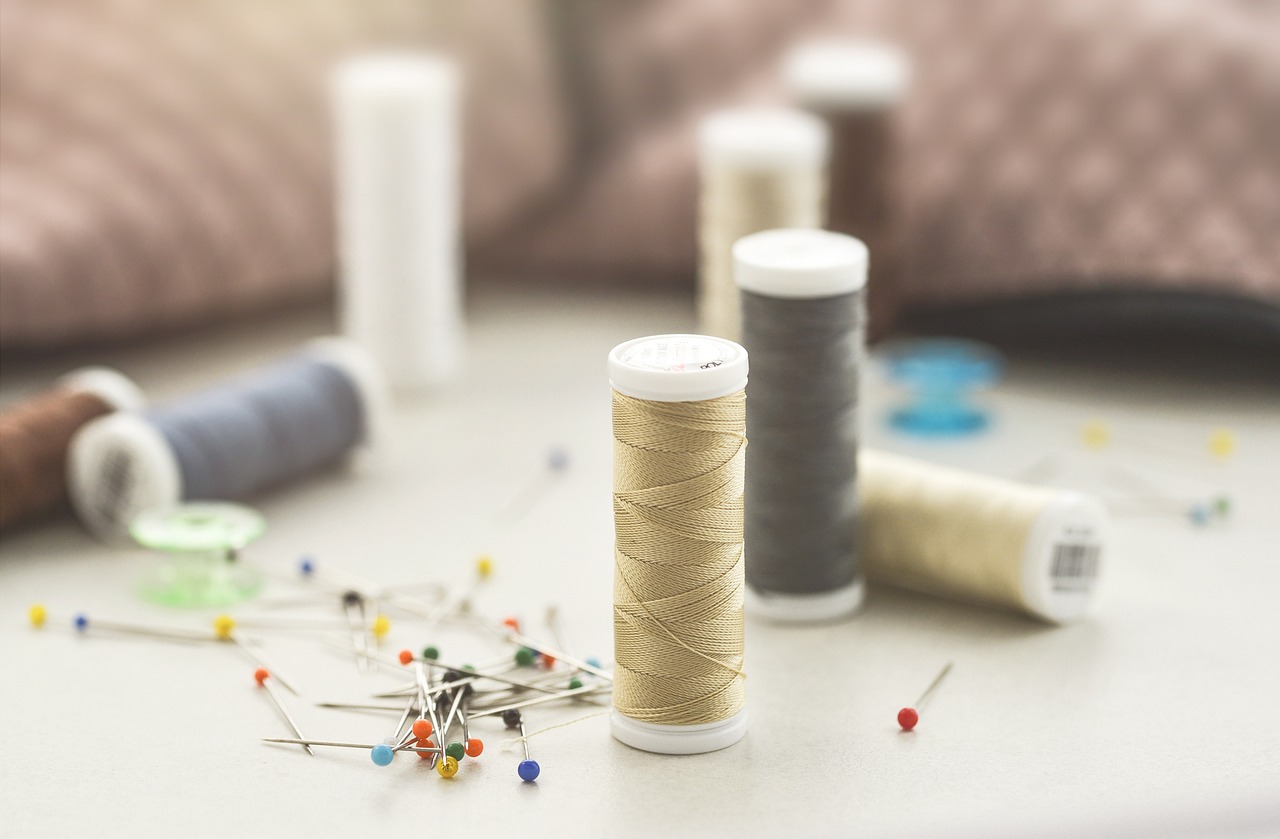
Using Non-Toxic Materials
When embarking on the exciting adventure of creating invisible ink, it’s essential to prioritize safety, especially when kids are involved. Using non-toxic materials is crucial to ensure that children can explore their creativity without any health risks. Luckily, many common household items are not only safe but also effective for crafting invisible ink. For instance, substances like lemon juice, vinegar, and baking soda are all natural and safe to handle. These materials can be found in most kitchens, making them easily accessible for a fun science experiment.
It's important to educate children about the significance of using non-toxic substances. They should understand that some materials can be harmful if ingested or if they come into contact with skin. By emphasizing the use of safe items, parents can instill a sense of responsibility in their kids while allowing them to enjoy the thrill of secret writing. Here’s a quick overview of some non-toxic materials that can be used:
| Material | Safety Level | Notes |
|---|---|---|
| Lemon Juice | Non-toxic | Safe for skin; reveals messages when heated |
| Baking Soda | Non-toxic | Safe for kids; needs heat to reveal |
| Vinegar | Non-toxic | Common kitchen item; can be mixed with other substances |
By using these materials, children can safely engage in their invisible ink experiments. Moreover, parents can encourage kids to think creatively about other safe items they might find around the house. This not only enhances their crafting experience but also teaches them to be resourceful and innovative. Remember, the goal is to have fun while learning, and ensuring a safe environment is key to achieving that!
Ultimately, the use of non-toxic materials not only protects children's health but also enhances their overall experience with science crafts. When kids feel safe, they are more likely to dive deep into their experiments, ask questions, and explore the fascinating world of chemistry and creativity.
- What is invisible ink made from? Invisible ink can be made from various non-toxic household items like lemon juice, vinegar, and baking soda.
- Is it safe for kids to use heat to reveal messages? Yes, but adult supervision is essential to ensure safety when using heat sources.
- Can I use other materials for invisible ink? Absolutely! As long as they are non-toxic and safe for children, feel free to experiment.
- How can I make invisible ink visible? You can reveal invisible ink using heat or UV light, depending on the type of ink used.
Frequently Asked Questions
- What materials can I use to create invisible ink?
You can use common household items like lemon juice, vinegar, and baking soda to create invisible ink. These materials are not only safe for kids but also easily accessible in most kitchens, making the crafting process fun and convenient.
- How do I reveal the messages written with invisible ink?
There are several methods to reveal your secret messages! The classic heat method involves using a light source or a heat source like an iron to make the writing visible. Alternatively, if you're using UV-reactive inks, you can shine a UV light on your writing to uncover the hidden messages.
- Is it safe for kids to use heat when revealing messages?
While the heat method is safe when supervised, it's crucial to ensure that children understand the potential dangers of using heat sources. Always supervise them closely and teach them about safe practices in the kitchen or workshop to maintain a fun and safe crafting experience.
- Can I use any type of paper for invisible ink crafts?
Yes! You can use various types of paper, but plain white paper works best for revealing the messages clearly. The contrast will help the invisible ink stand out once you apply the heat or UV light.
- How can I make invisible ink more fun for kids?
To make the experience even more exciting, you can turn it into a treasure hunt! Have kids write secret clues with their invisible ink and then use the revealing methods to uncover each clue, leading to a special prize or treat at the end!
- What should I do if I accidentally use toxic materials?
If you accidentally use toxic materials, it's essential to stop the activity immediately and ensure that children wash their hands thoroughly. Always read labels and choose non-toxic materials to prevent any health risks during the crafting activities.



















